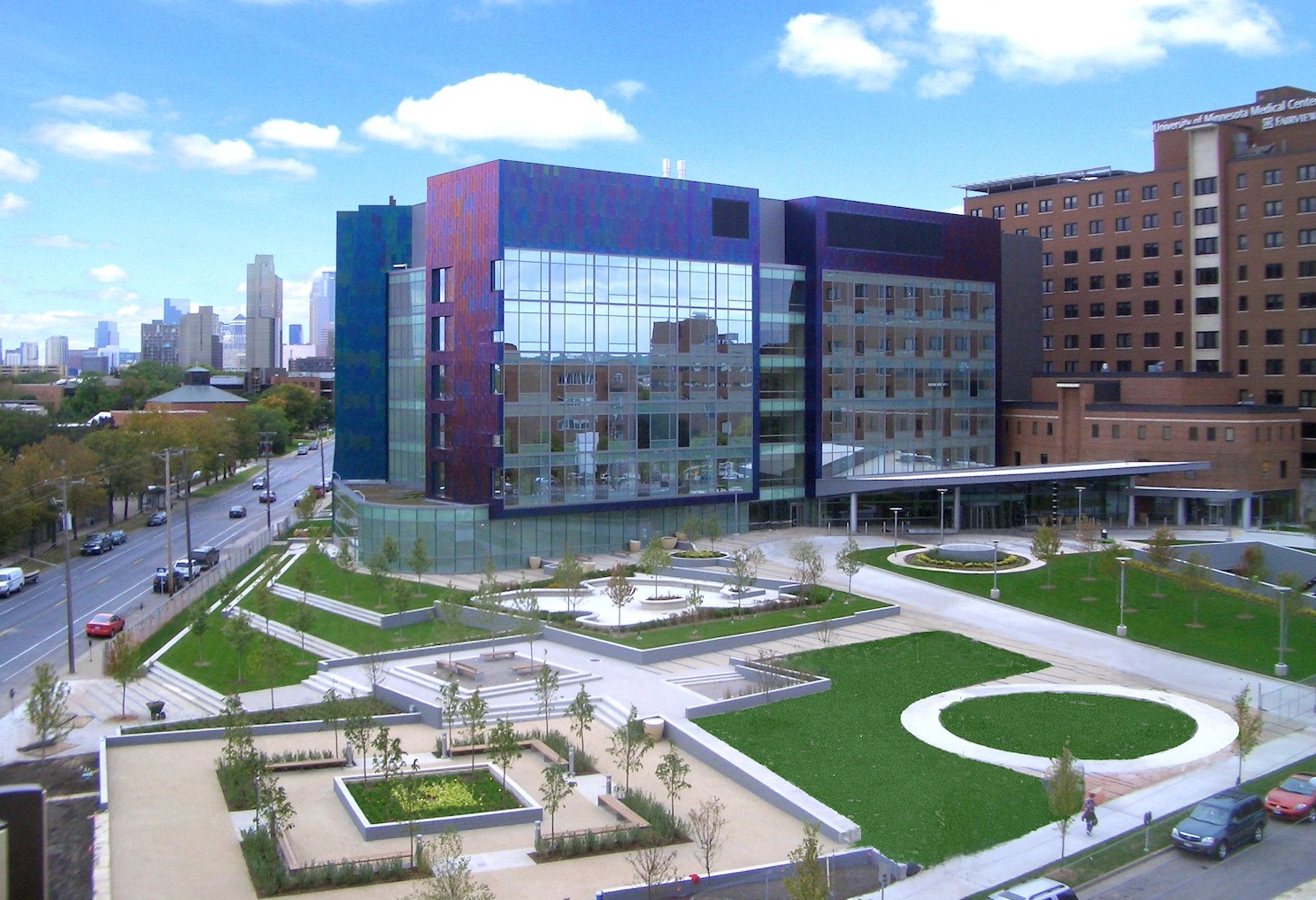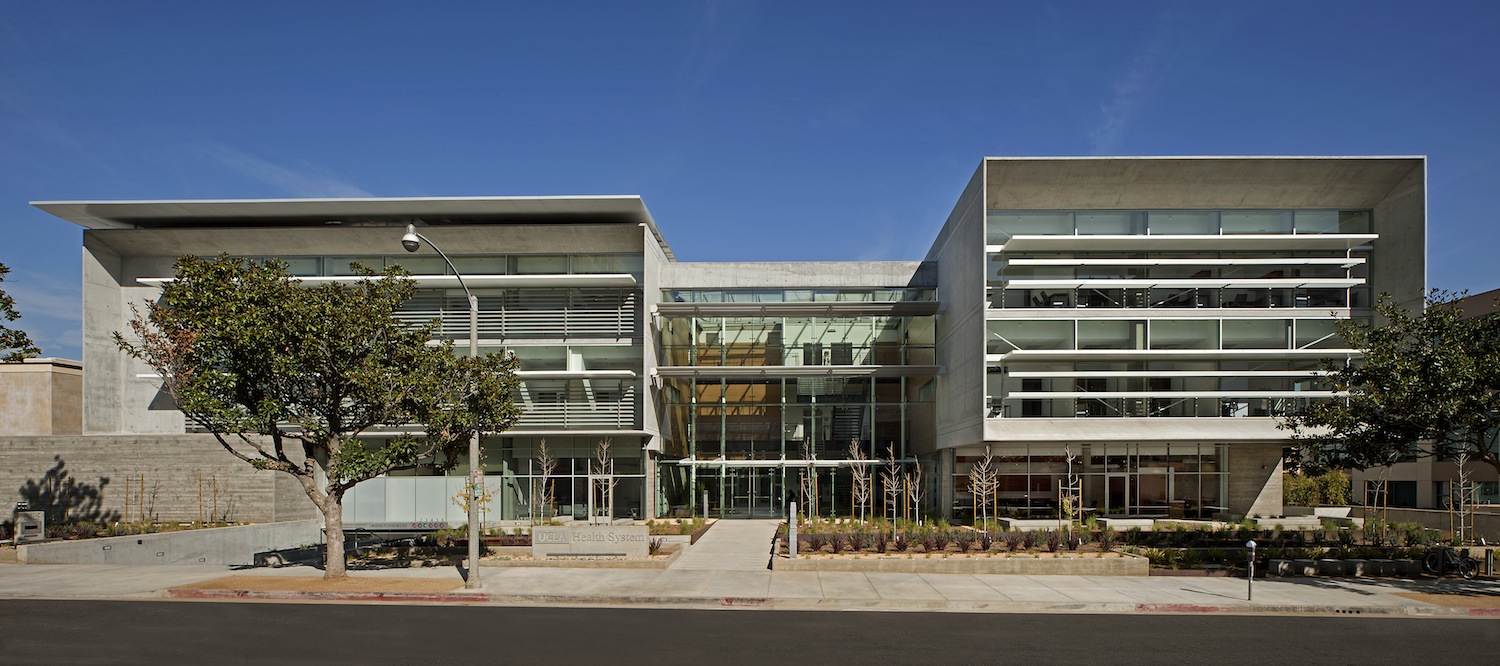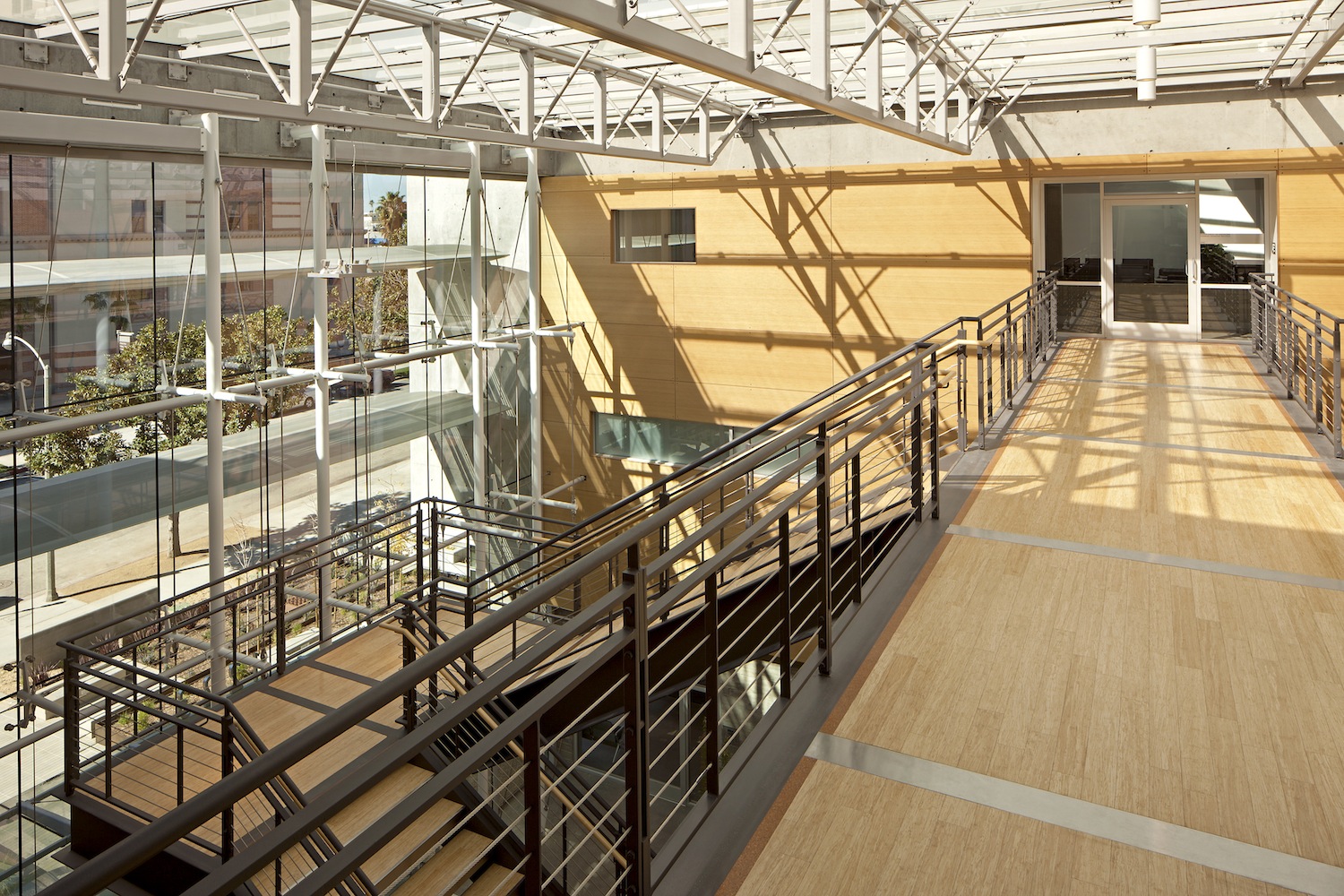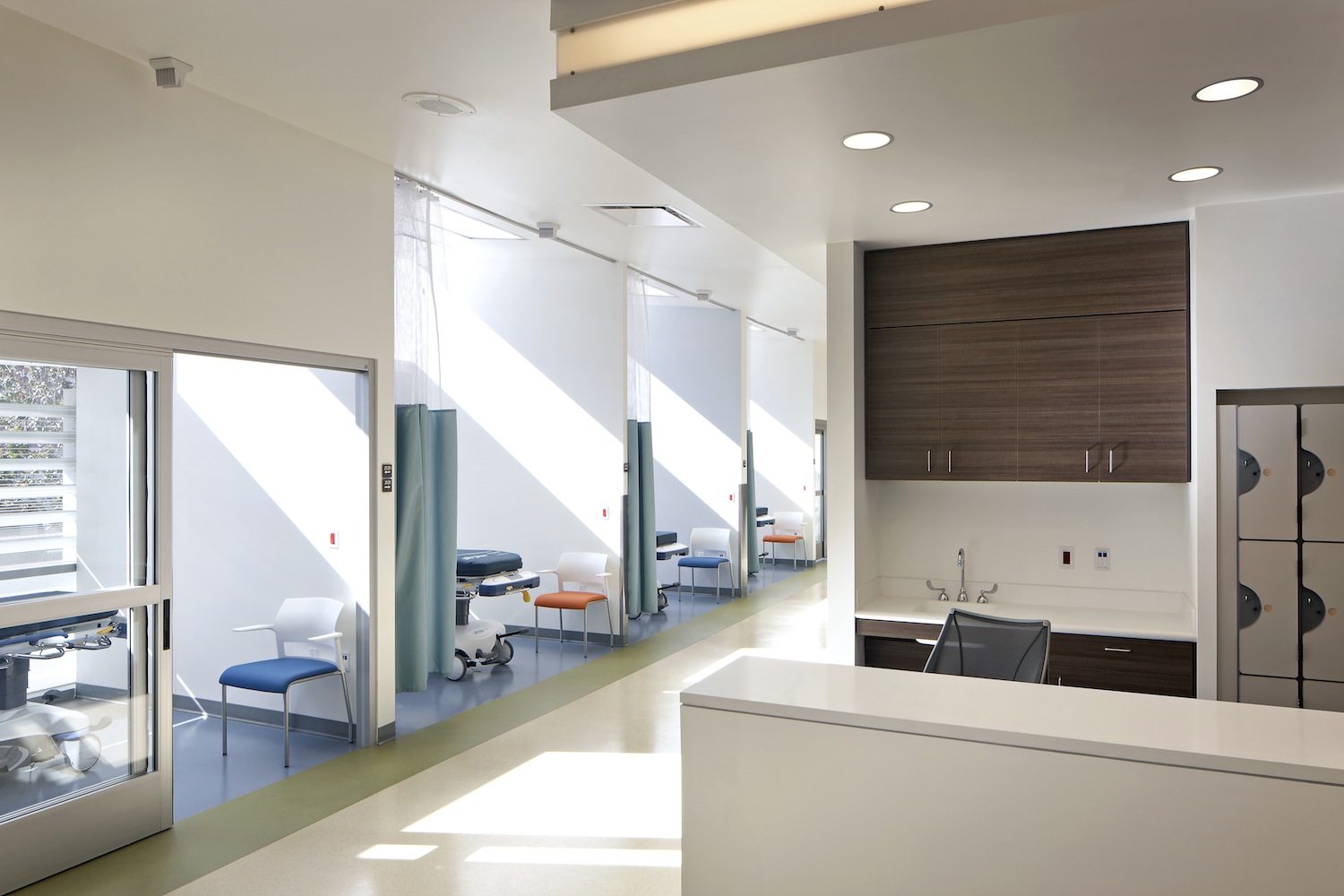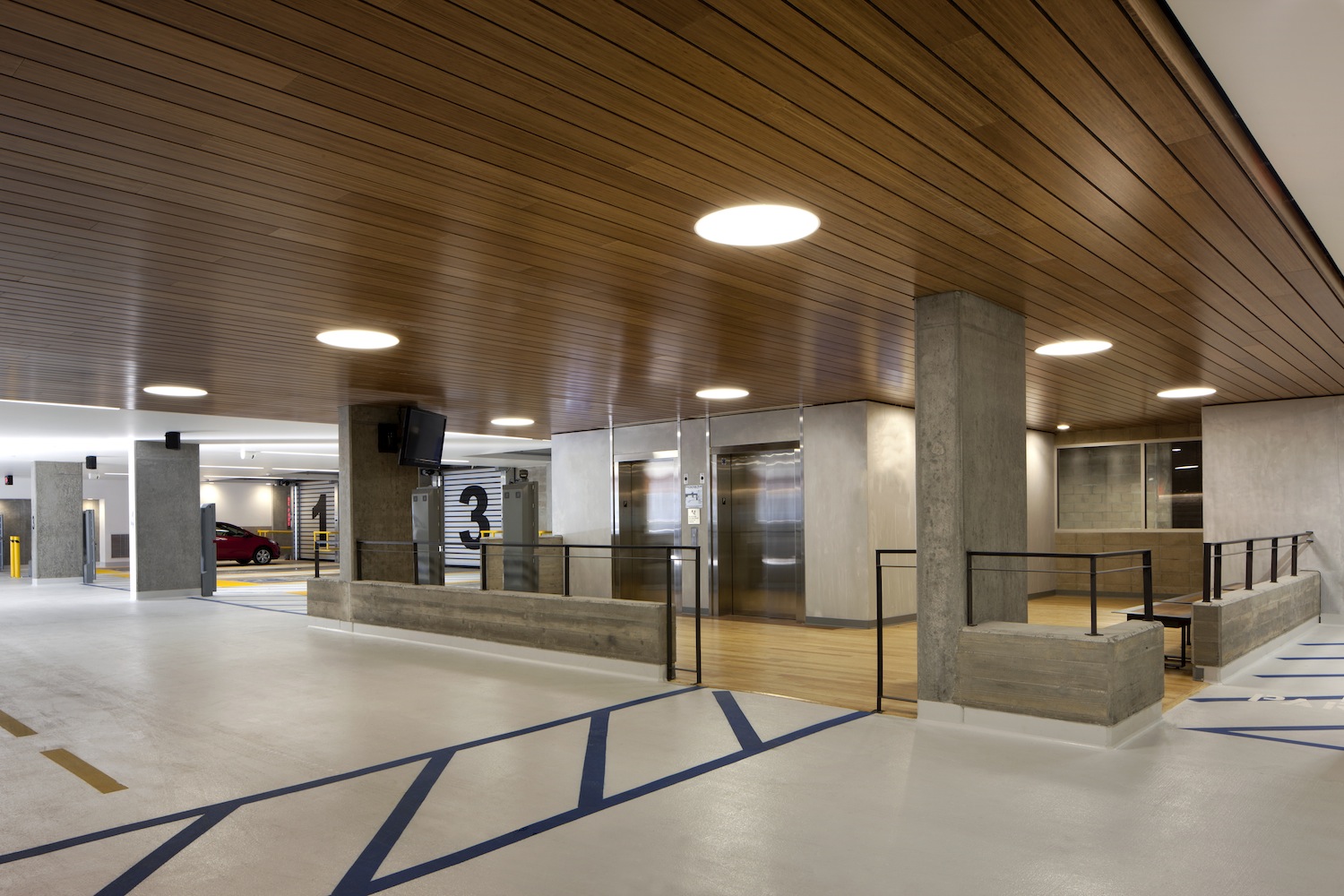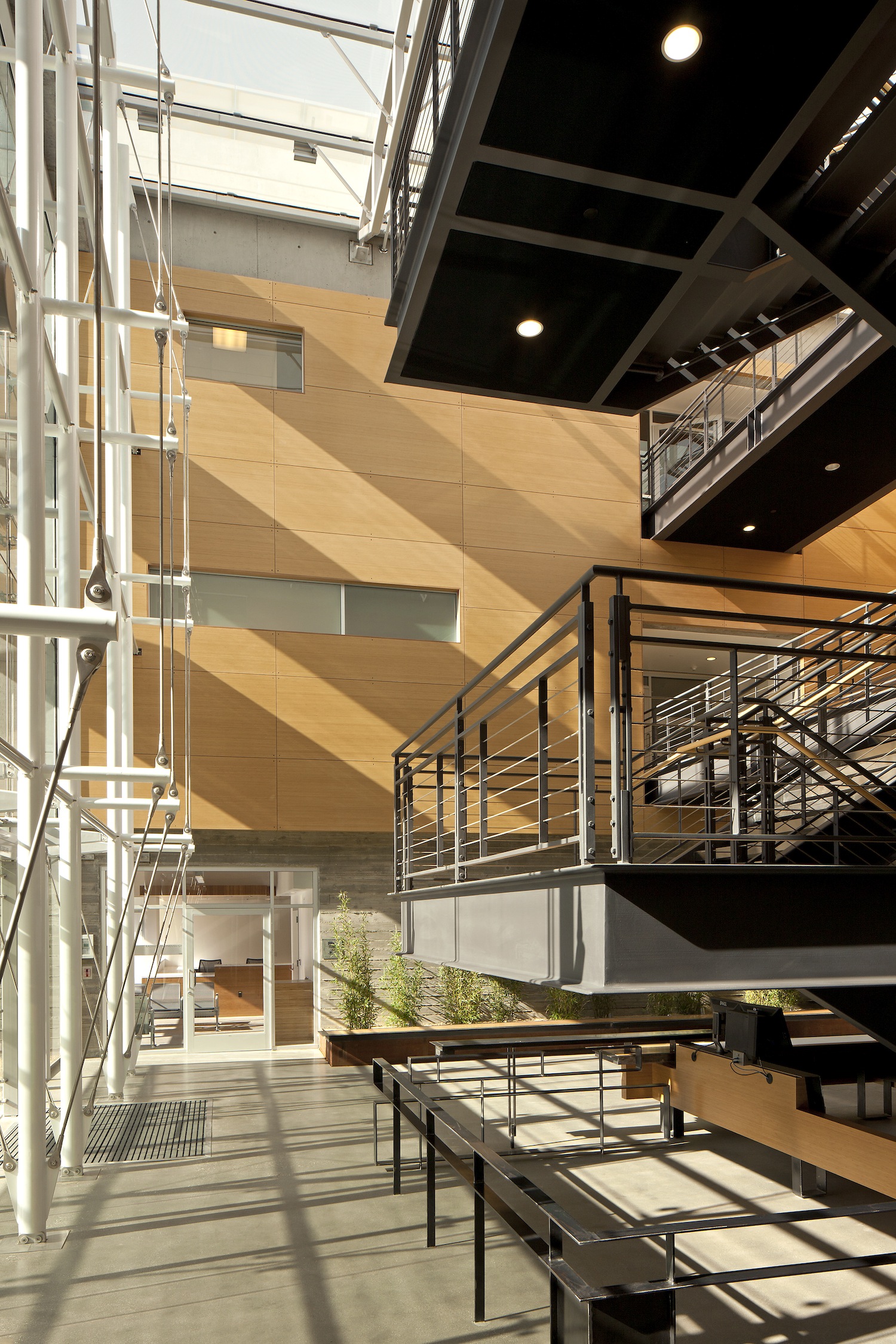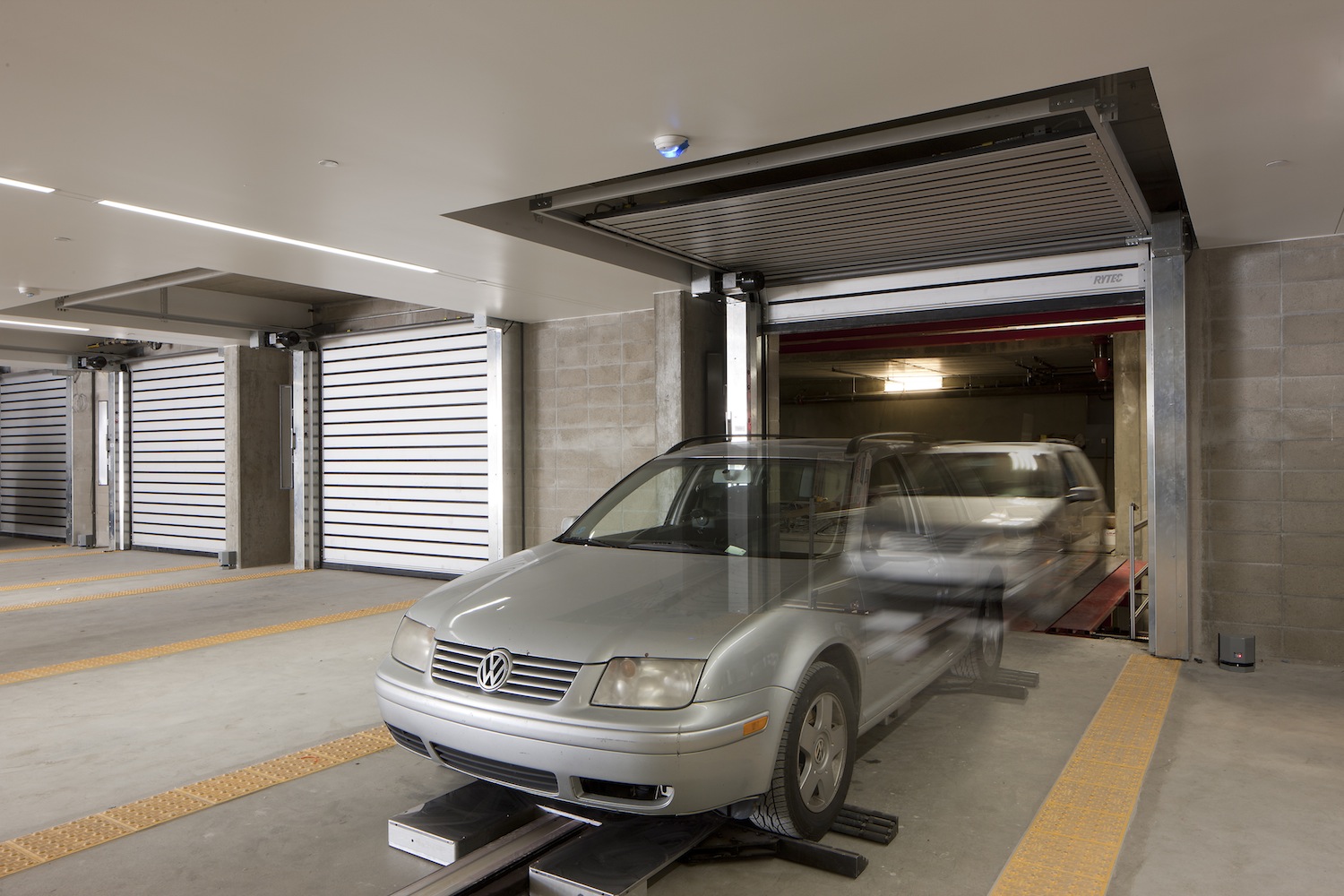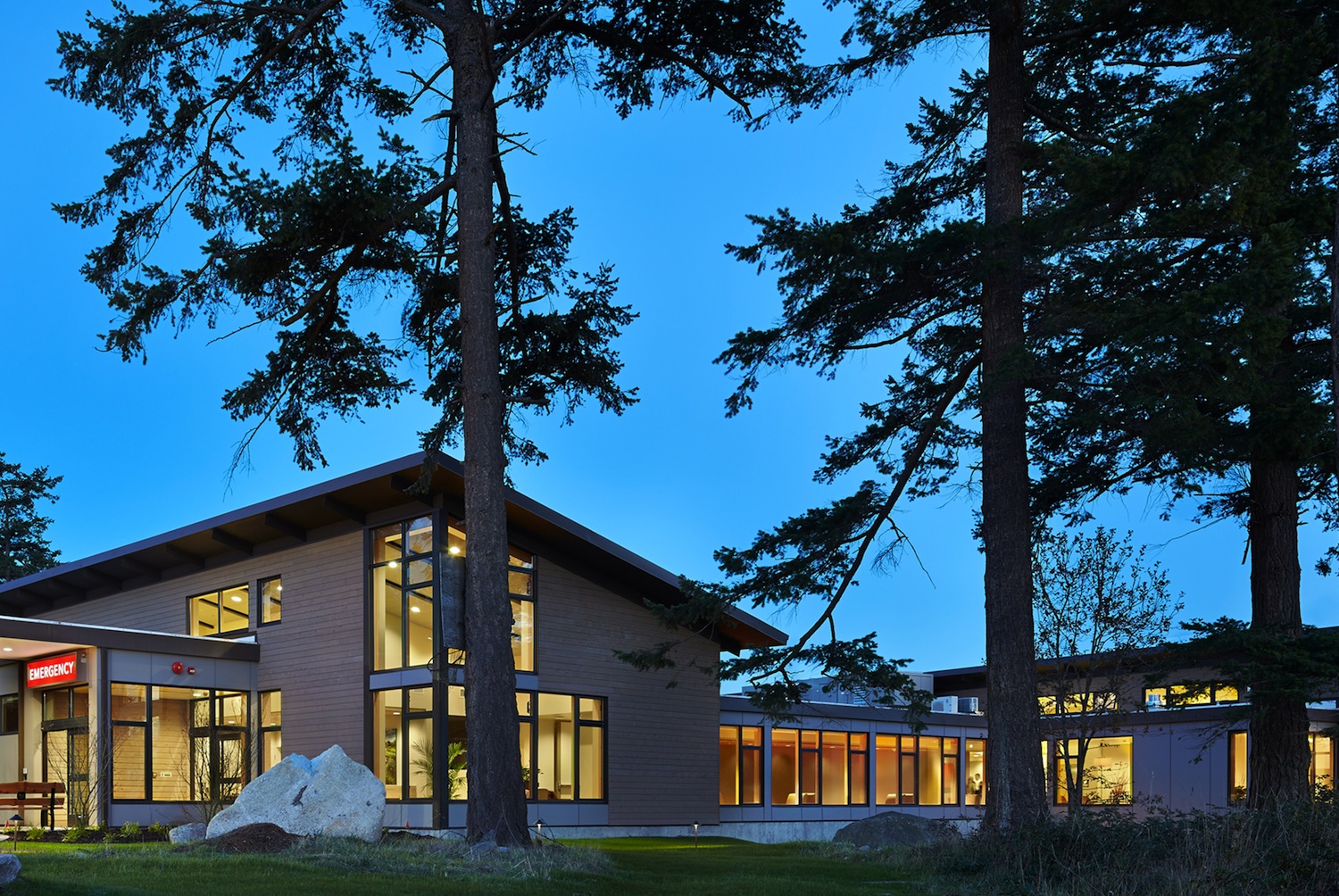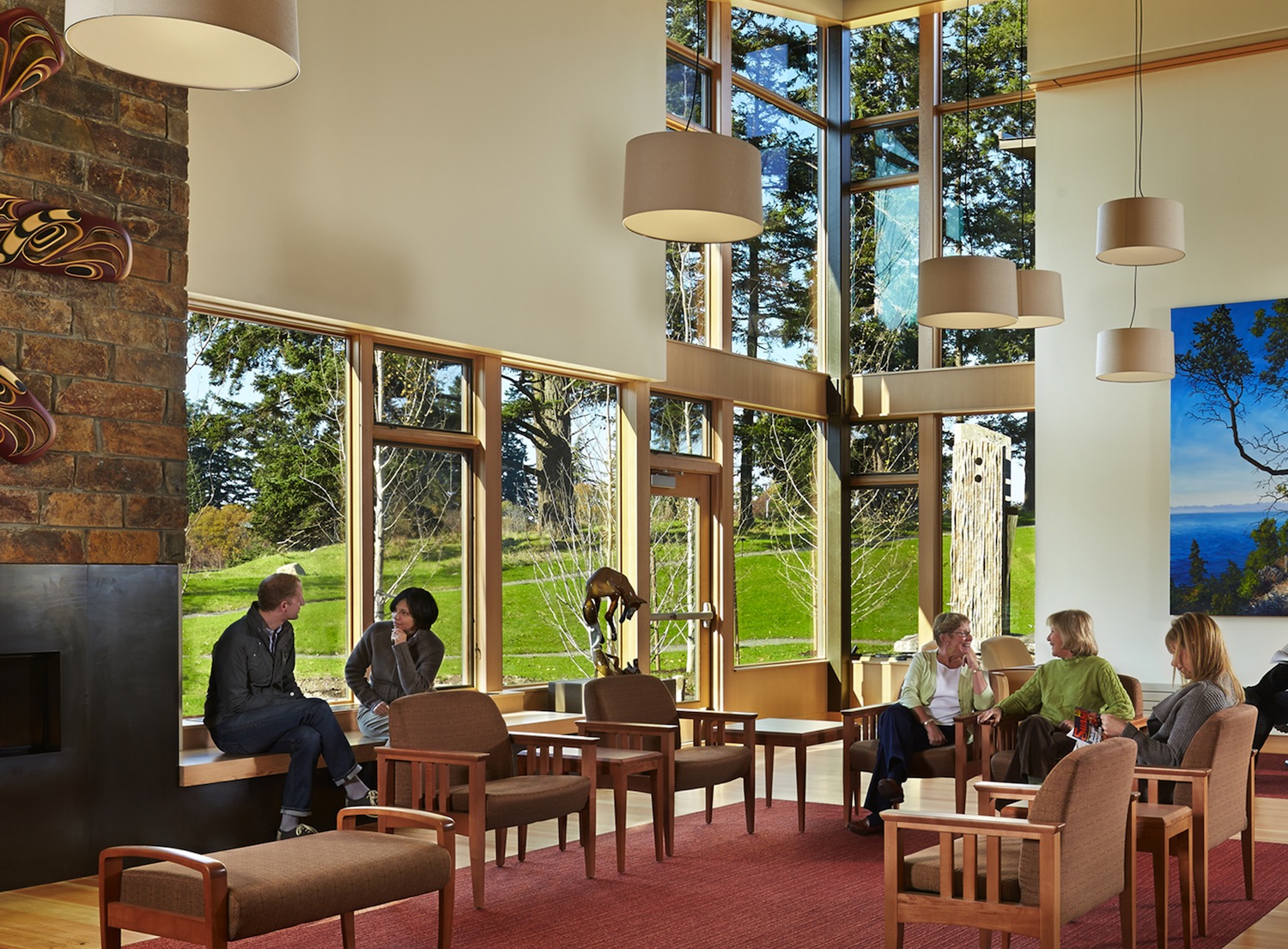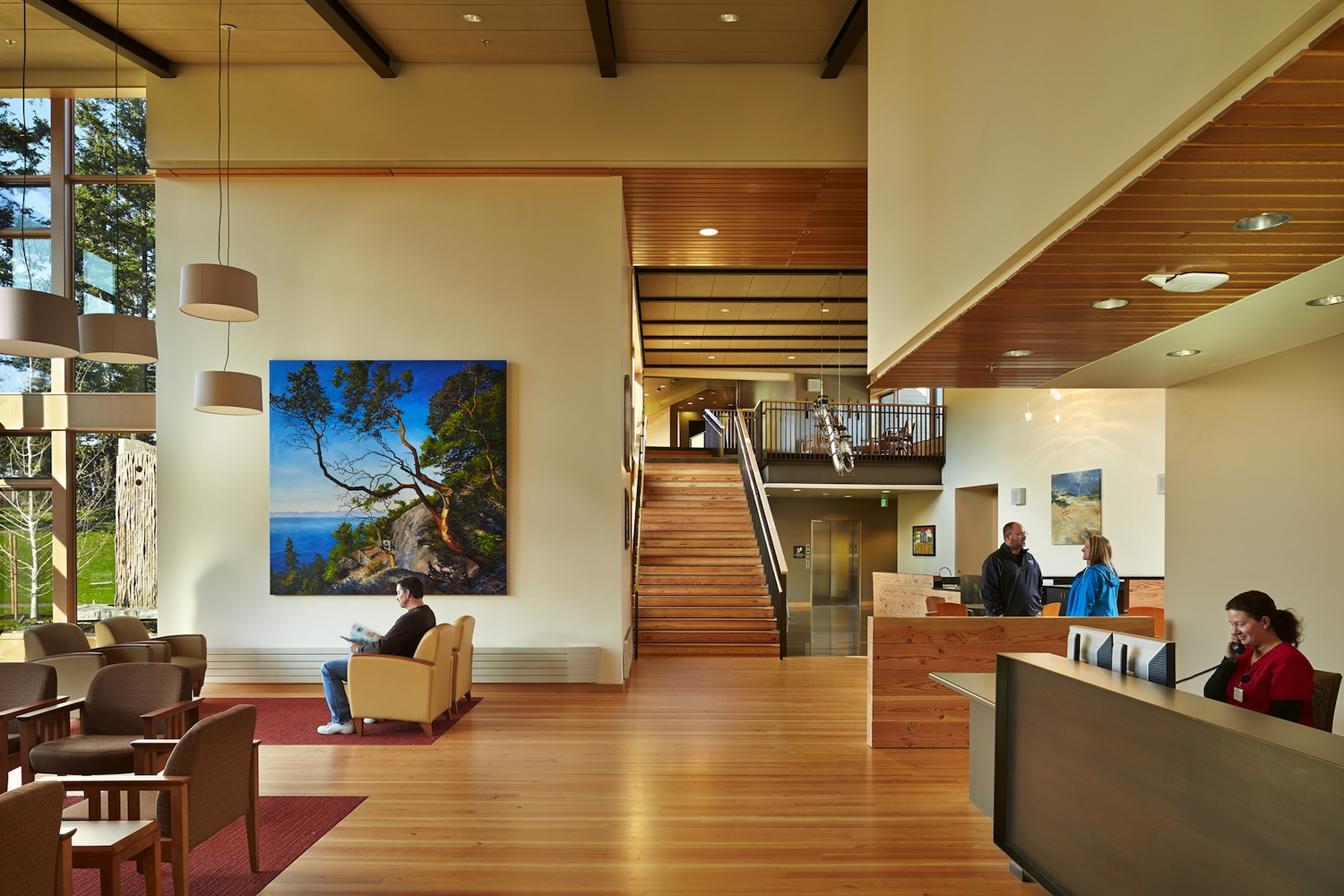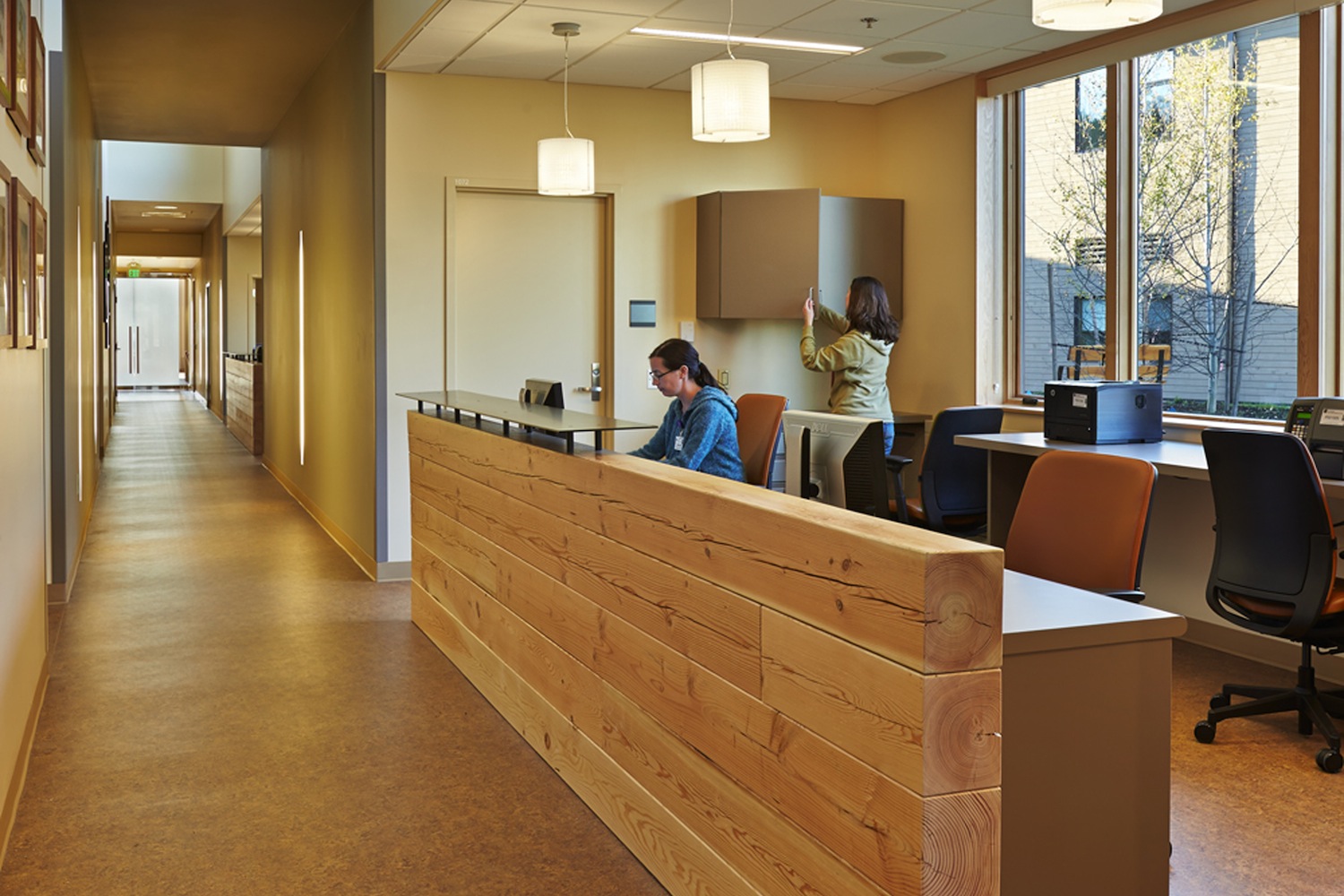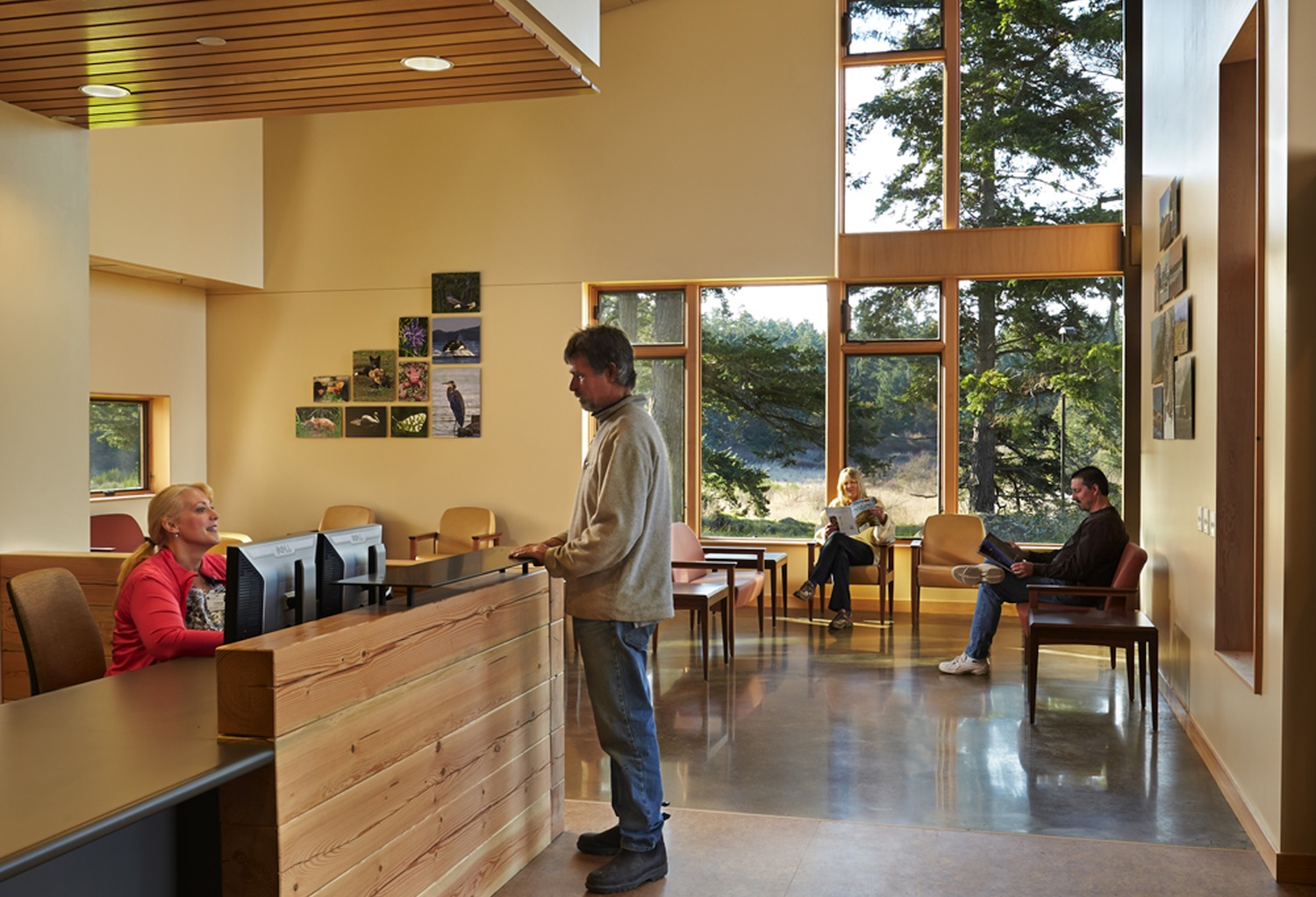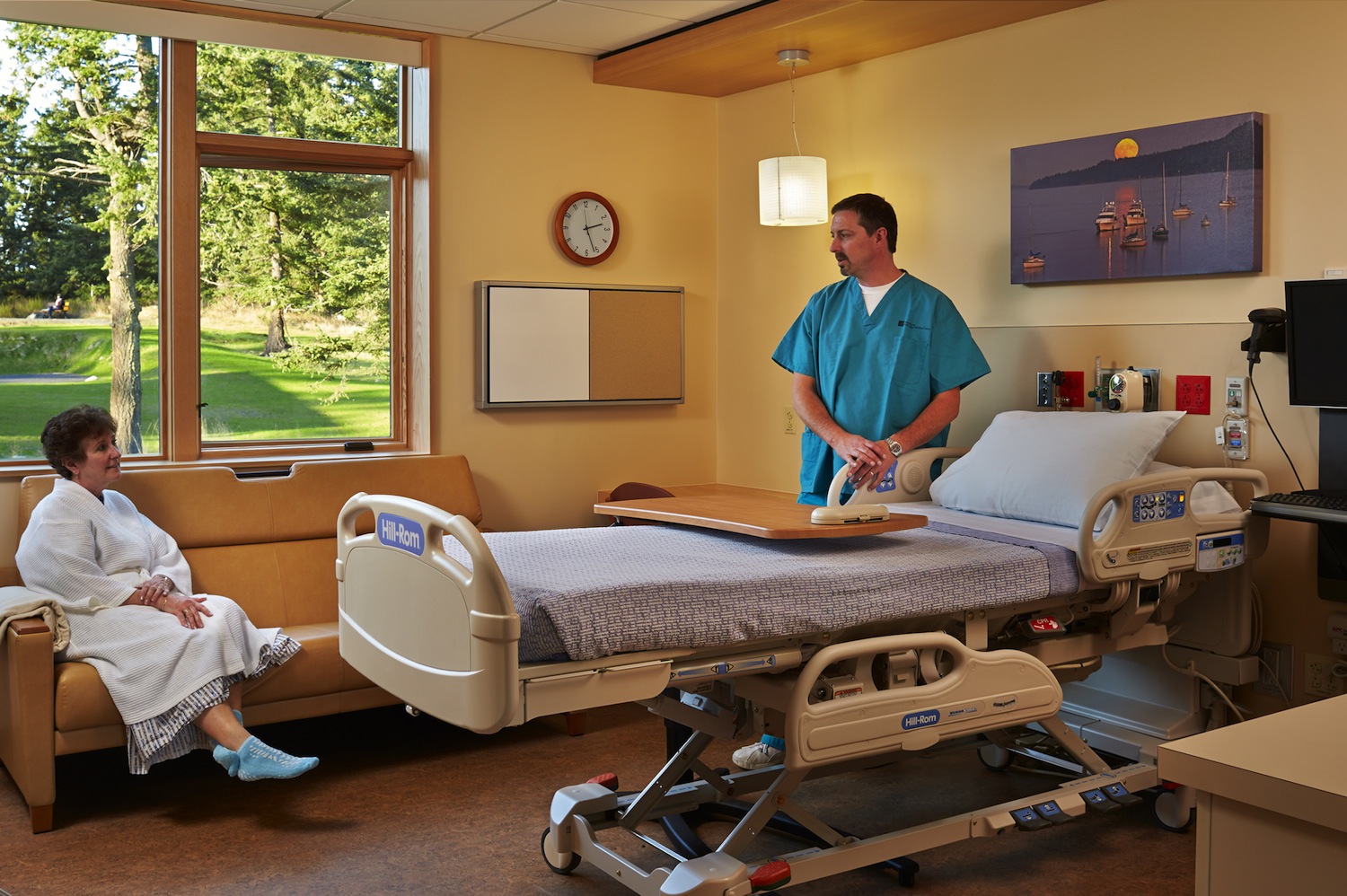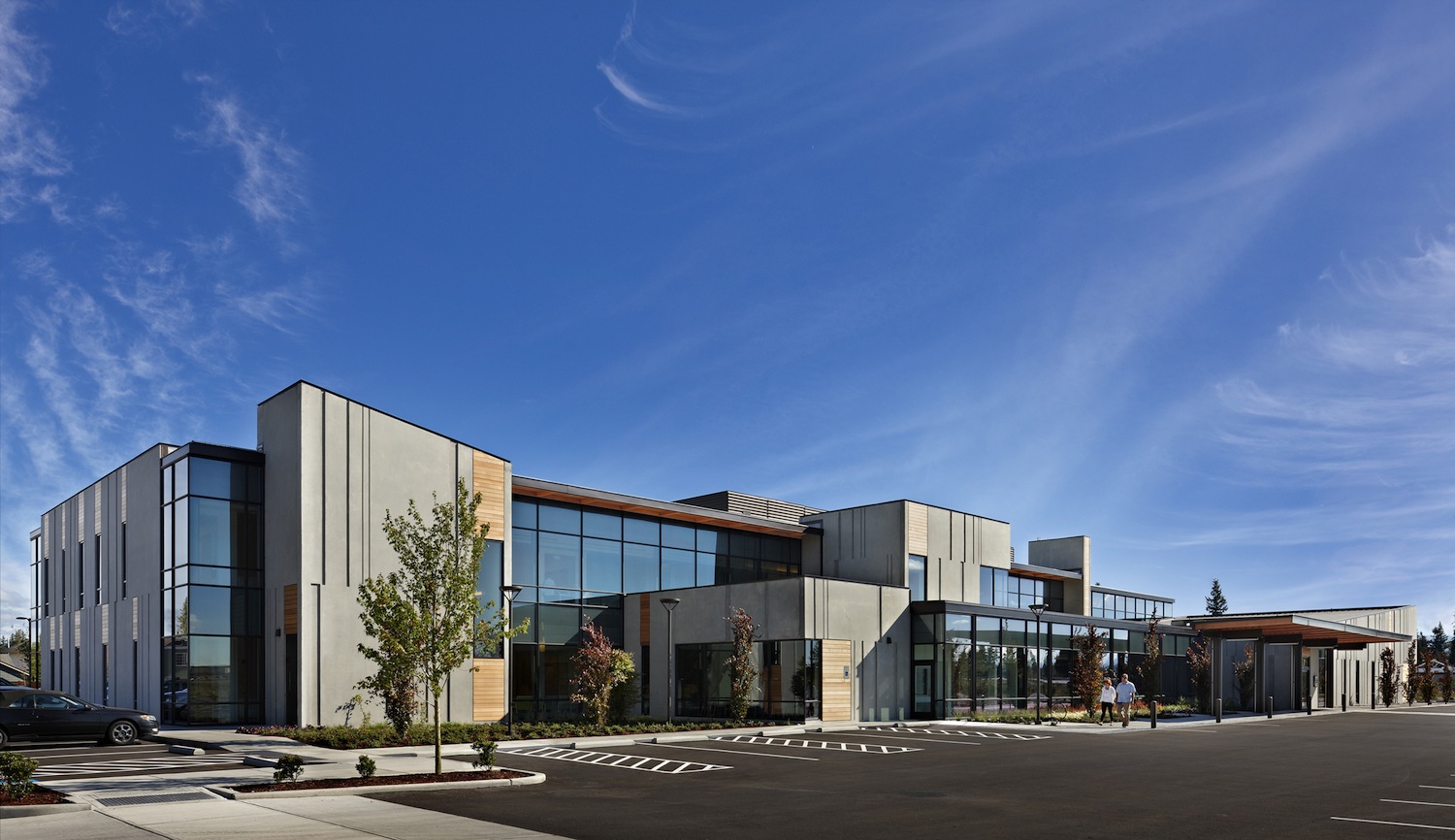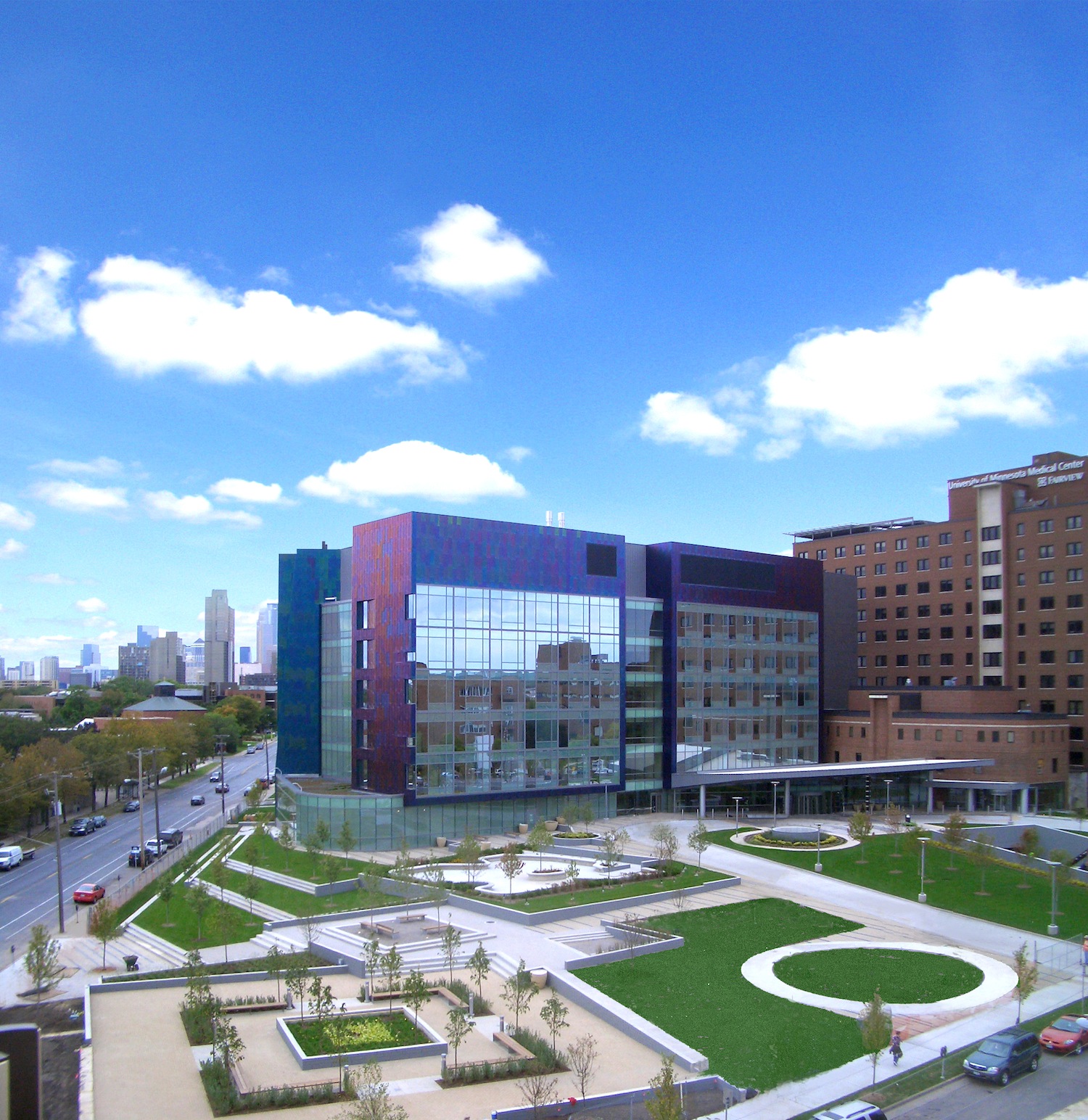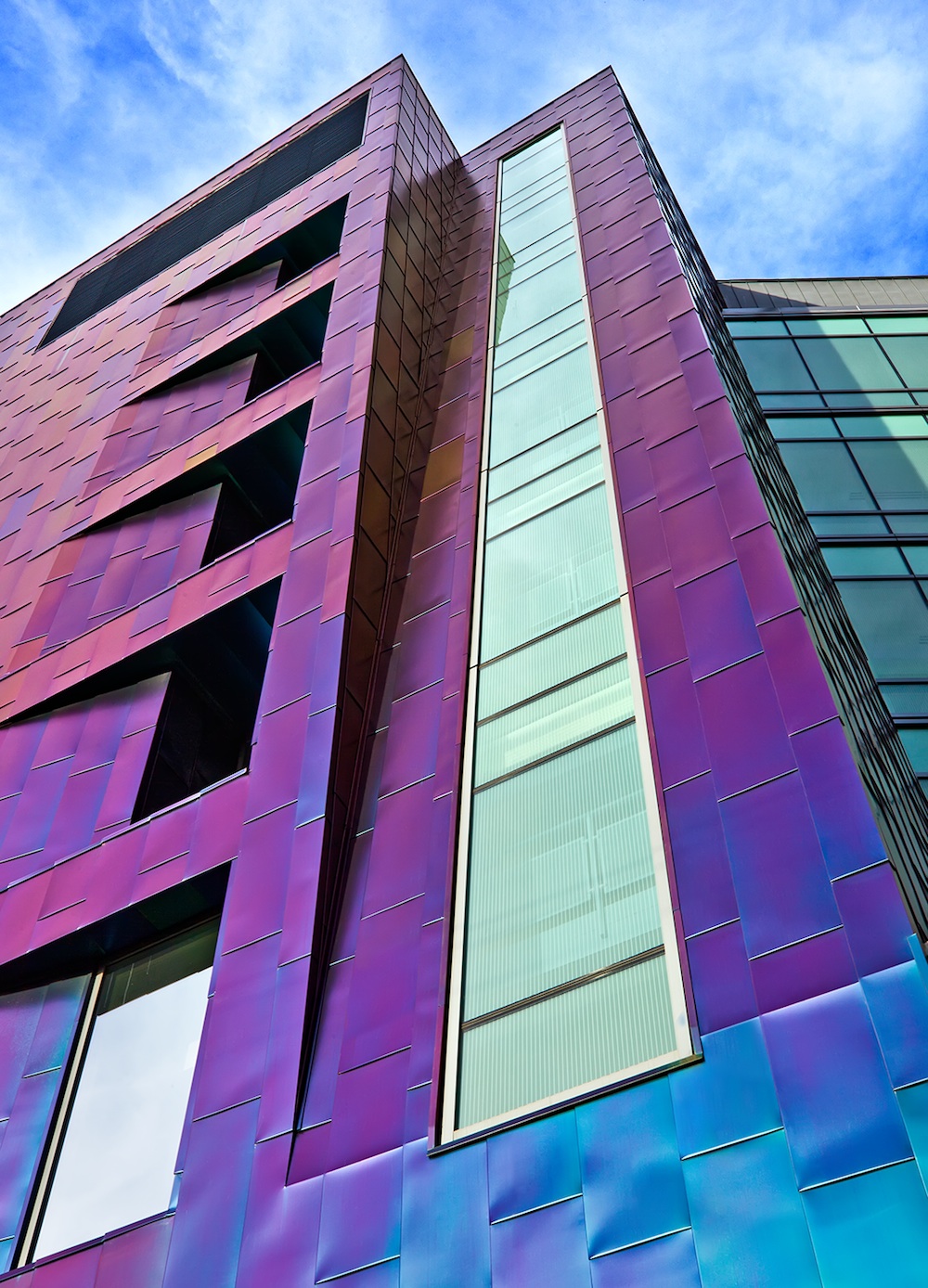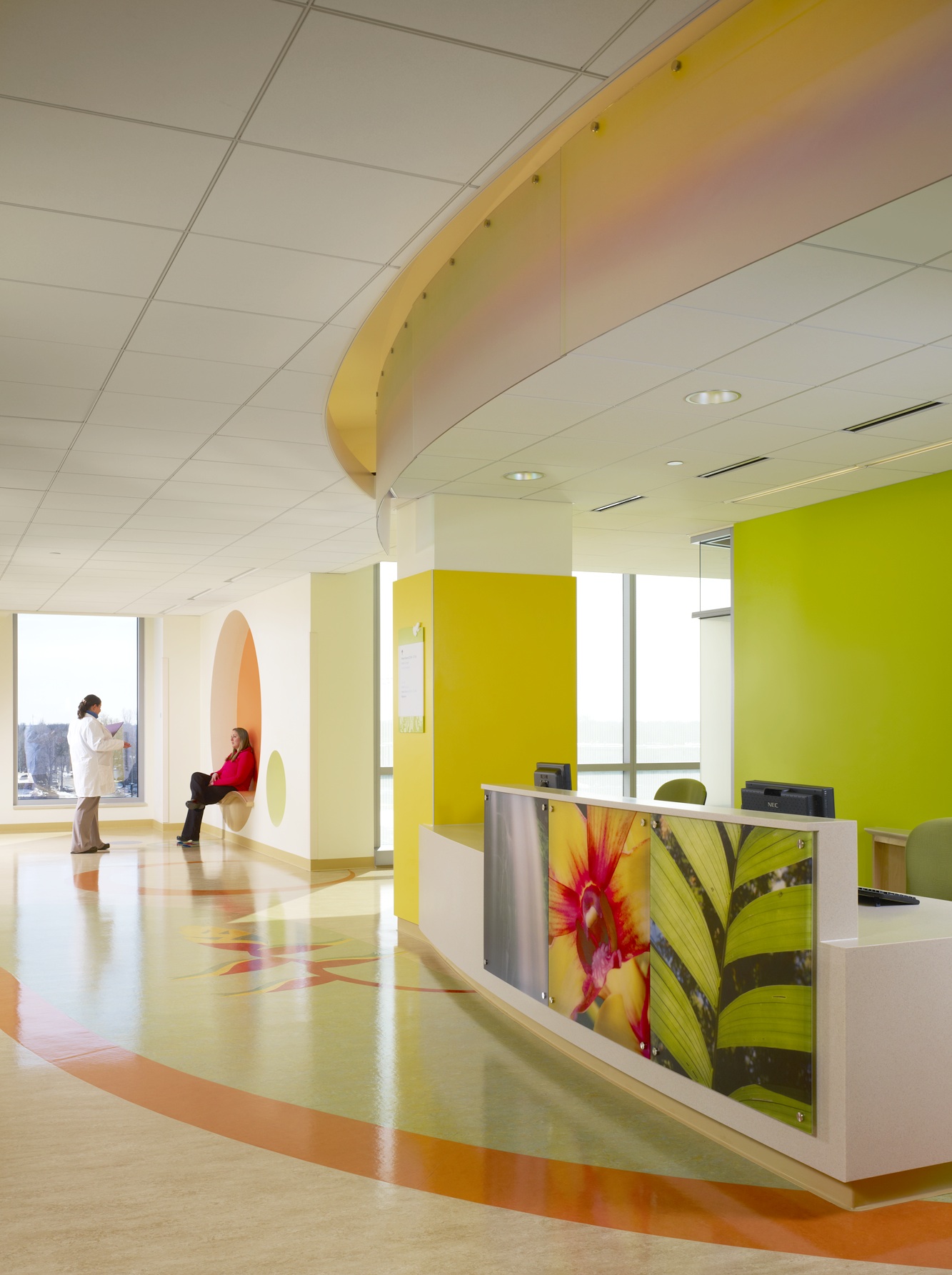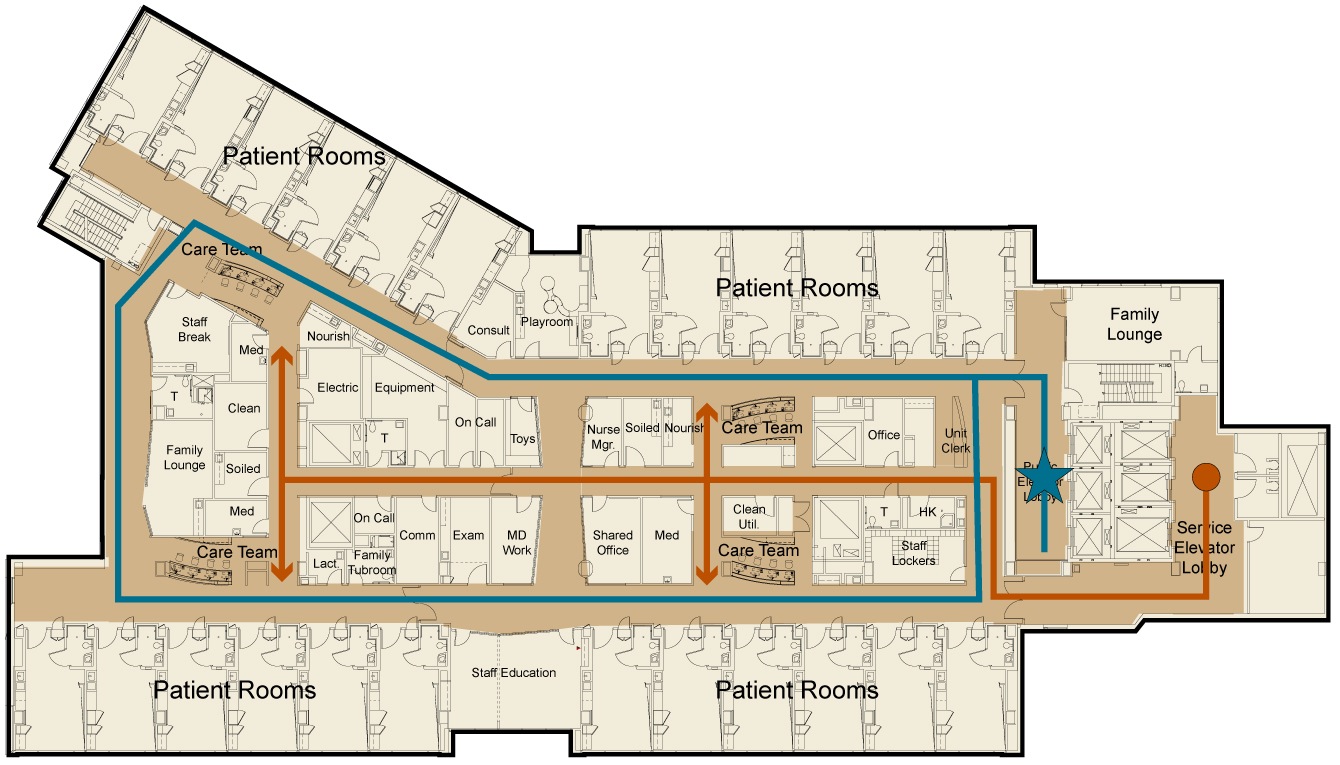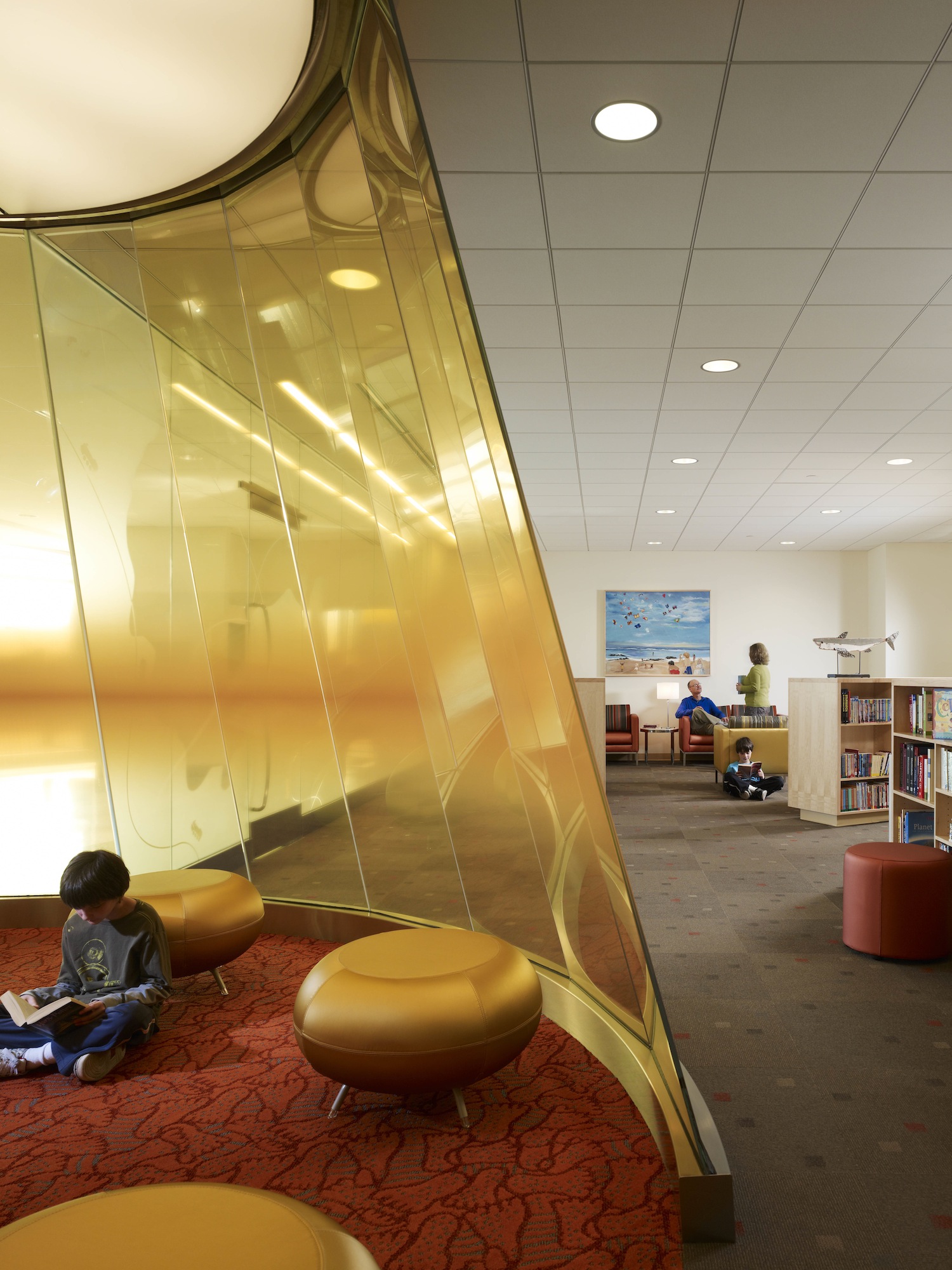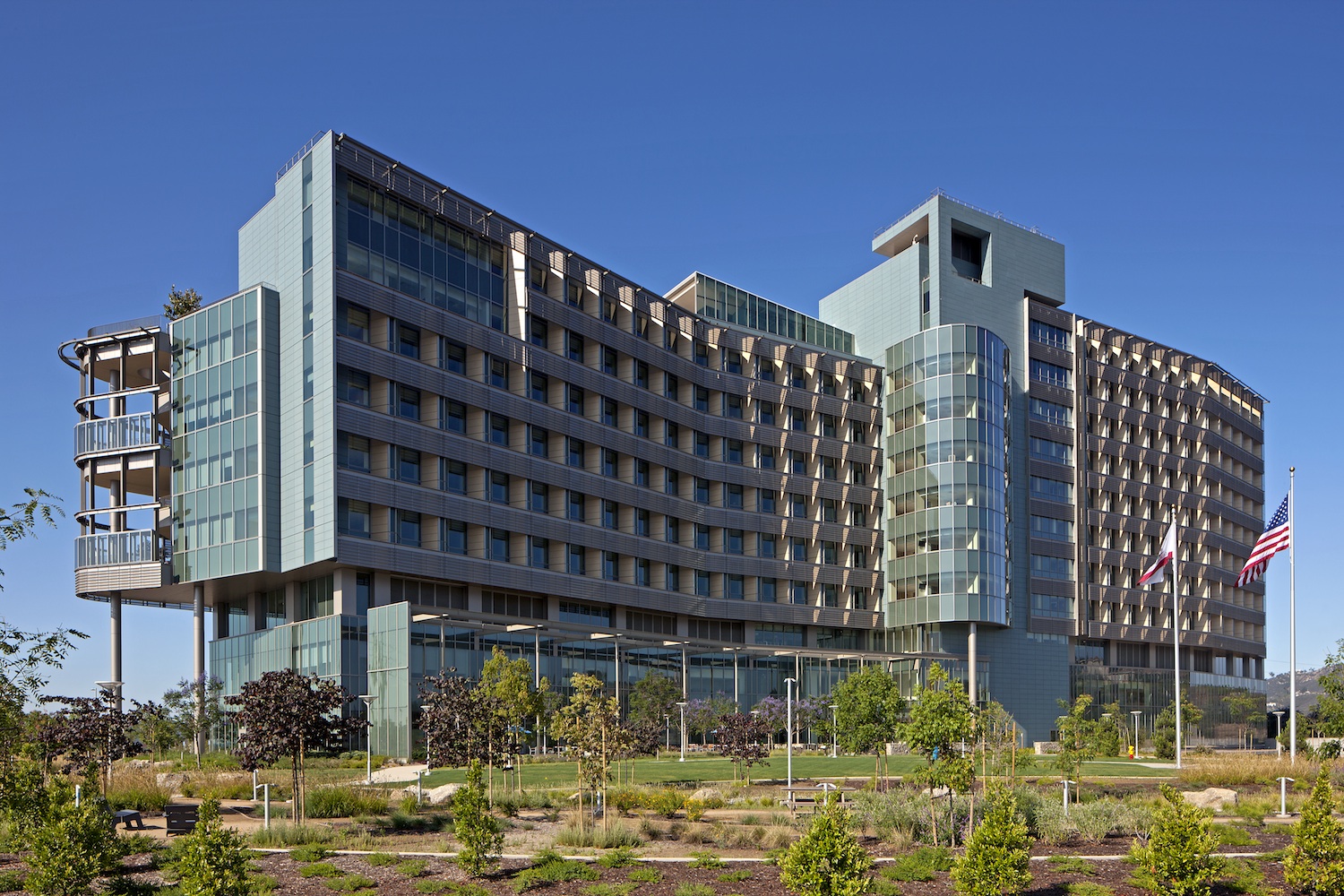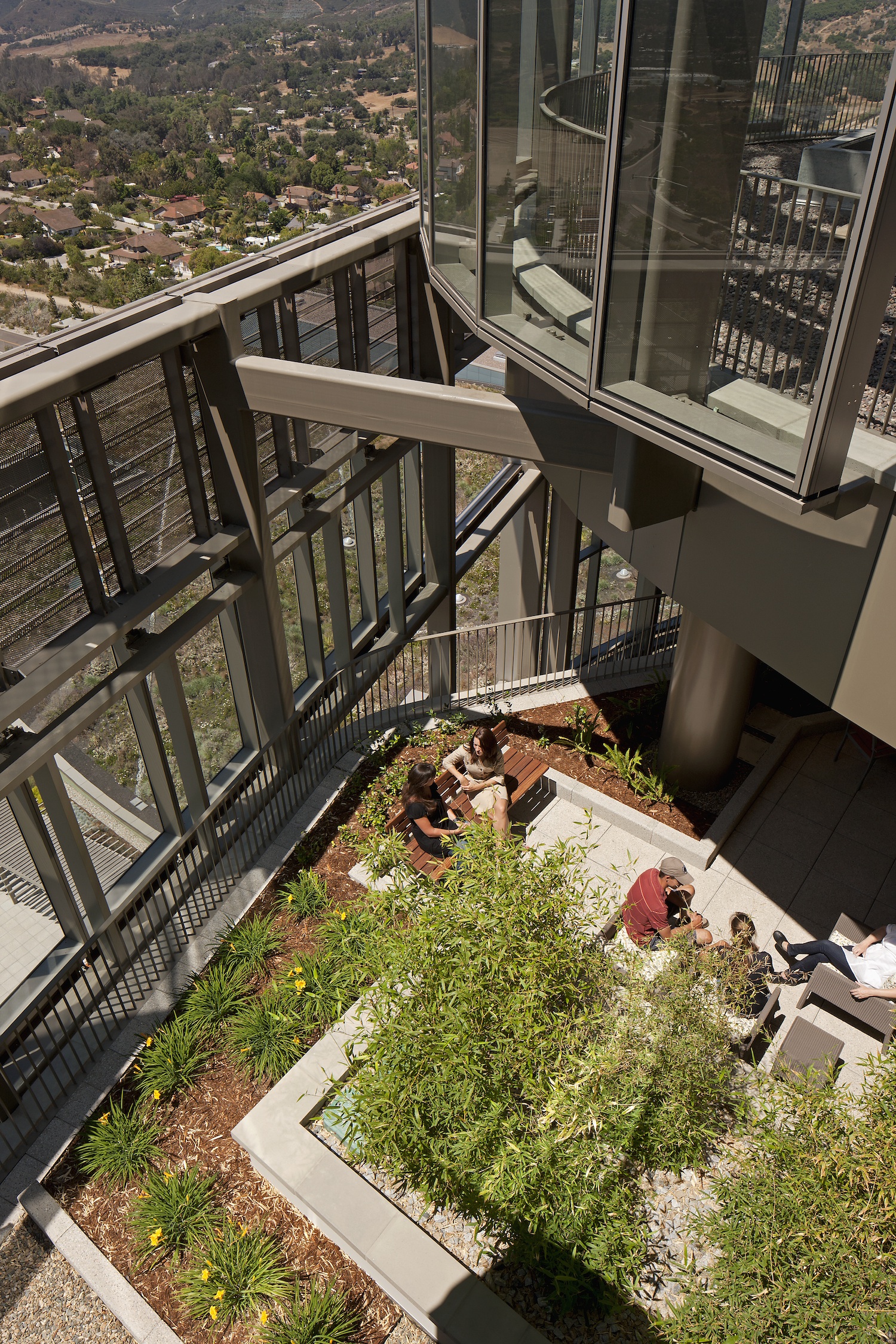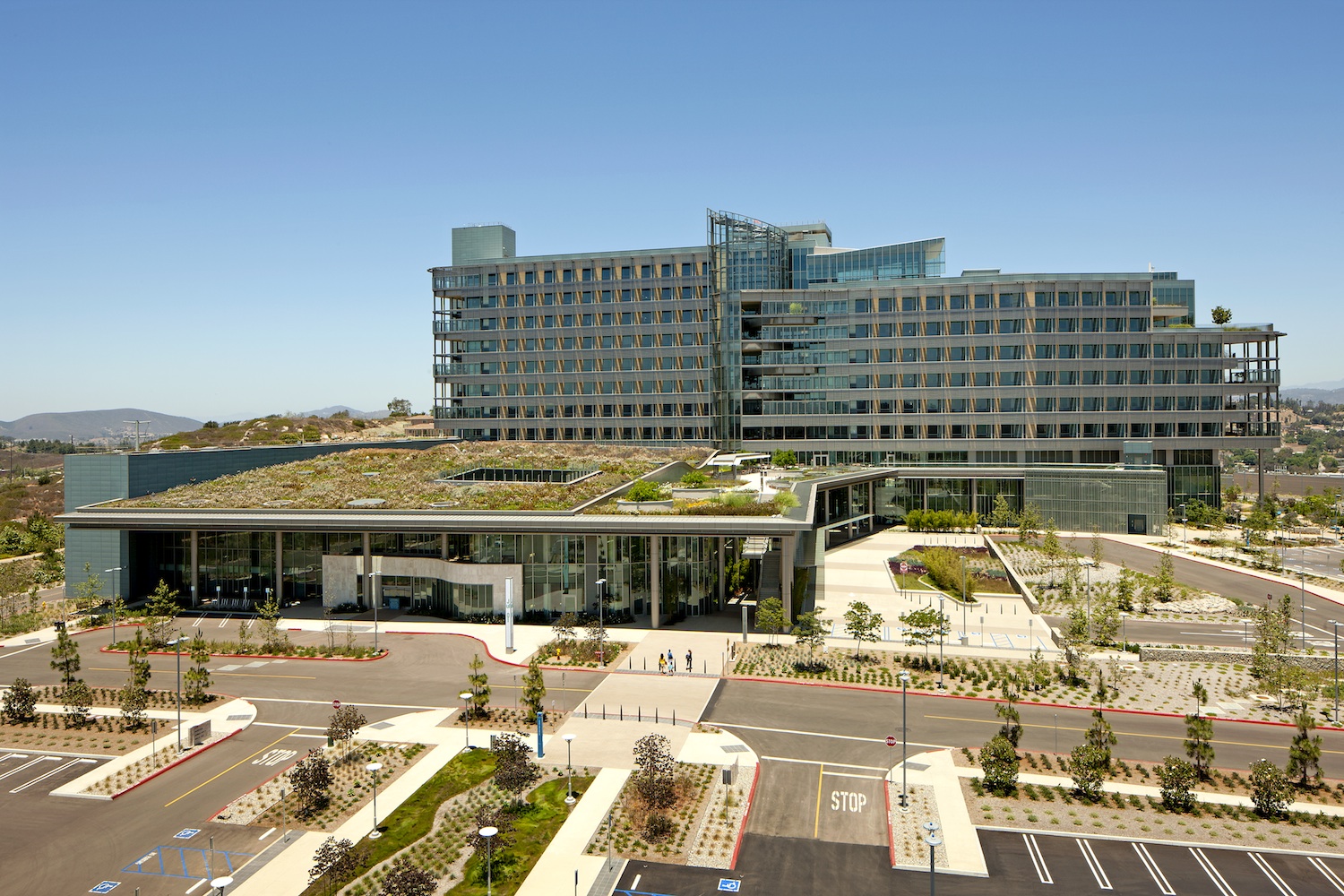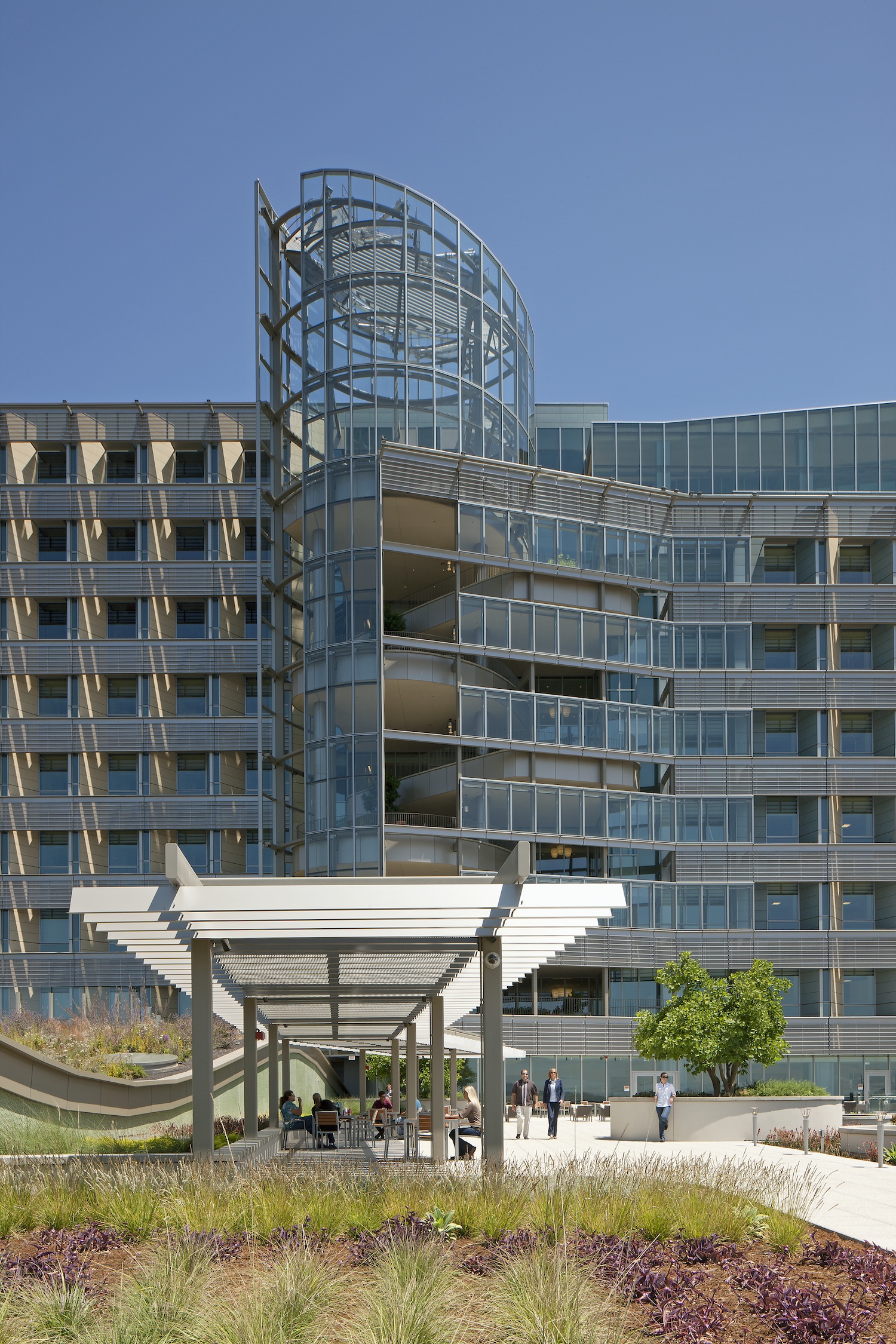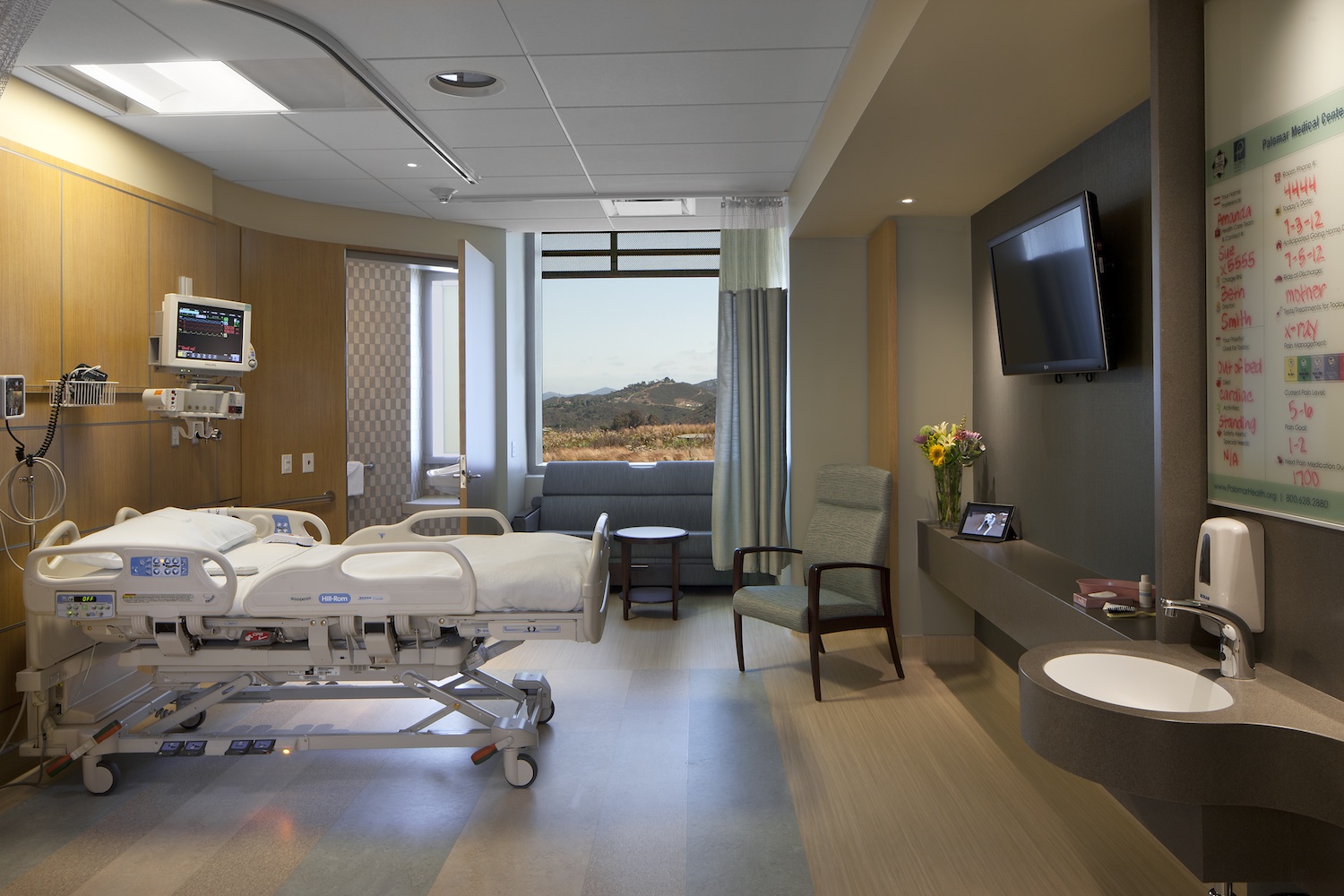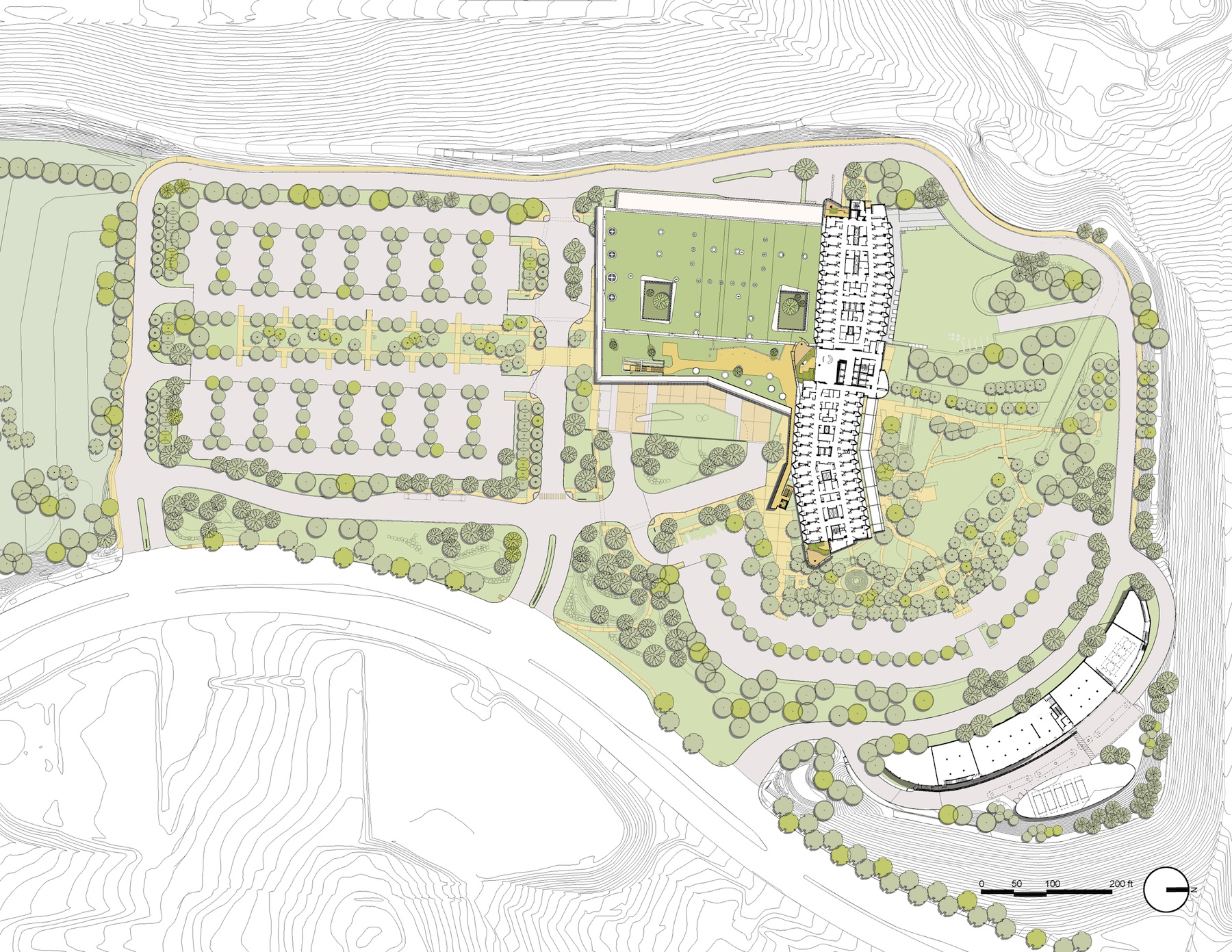Category A: Built, Less than $25 million in construction cost
1. UCLA Outpatient Surgery and Oncology Center; Santa Monica, California
Michael W. Folonis Architects
This outpatient surgery, oncology treatment and medical office facility asserts that a more-natural and less-clinical environment promotes healing in patients and productive behavior in medical staff. The architects sought the maximum inclusion of natural lighting and ventilation, and an enhanced indoor-outdoor connection. The design concept is inspired by the belief that principles of Modernism are the ideal means to realize the high standards of sustainability in healthcare design. The design achieves an aesthetic ideal, while delivering a patient-focused healing environment, the utility required by the owner, and the requirements for Gold LEED certification. This is the only project to win AIA-AAH Awards in both on-the-boards and built categories. Photos: Tom Bonner
2. Peace Island Medical Center; Friday Harbor, San Juan Island, Washington
Mahlum
Peace Island Medical Center began with a remote island community uniting to realize their vision of rural healthcare in the San Juan Islands. The hospital melds discreetly into the old-growth forest, basalt slopes and wetlands. Island resources are extremely limited, making sustainable choices fundamental. Naturally ventilated clinical areas and patient rooms connect occupants with fresh air and drive down energy use. The design reflects the values of the caregivers and community, embodying humility, environmental sensitivity and innovation. The Living Building Challenge served as a roadmap for sustainable initiatives, decoupled mechanical systems, greatly reduced potable water use and minimal energy use. Photos: Courtesy Mahlum
3. Adamsville Regional Health Center; Atlanta
Stanley Beaman & Sears
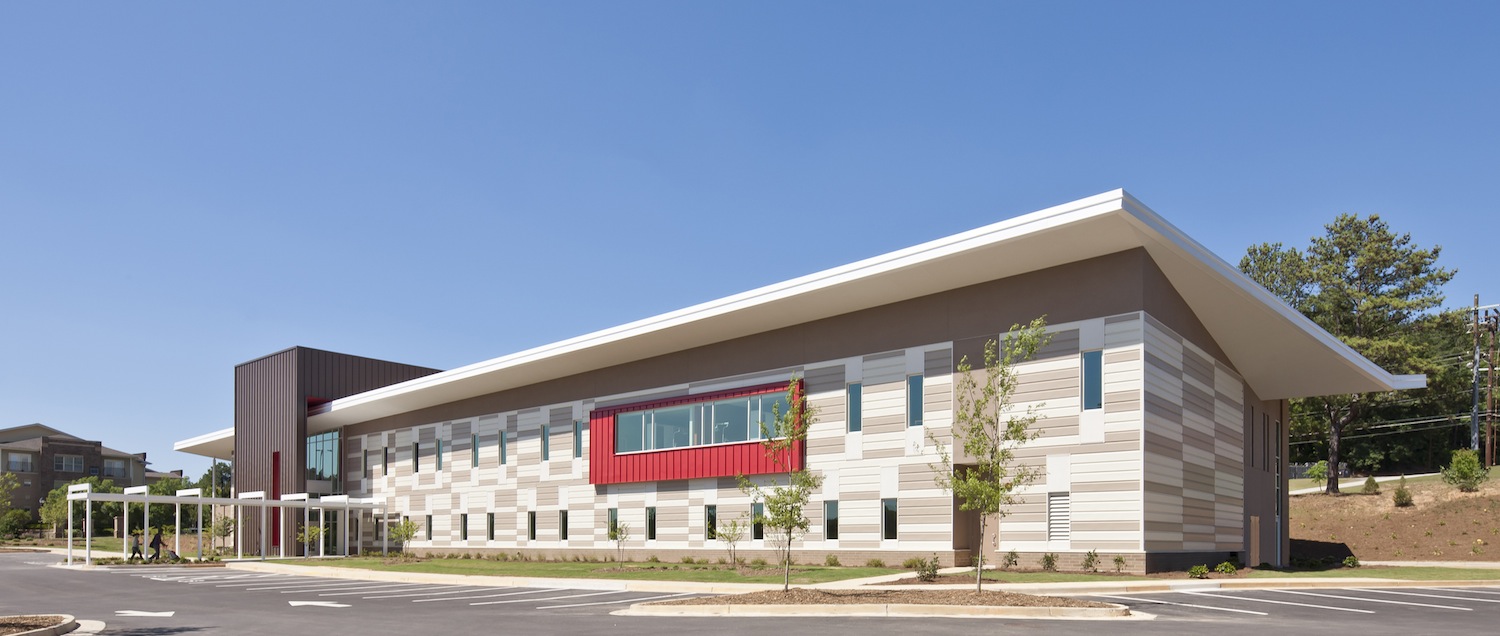
The 34,000-square-foot building houses a primary care clinic, a behavioral health clinic, childcare facilities, a dental clinic and a workforce community center. The co-location of these functions led the design team to consider the communal folk art of quilting and inspiration also came from the constructed paintings of contemporary Atlanta artist Radcliffe Bailey, who pieces together found objects, archival photographs and historic imagery with jazz-like effects. The design-build, fast-track project was completed, from start to finish, in 275 days. It required coordinating the participation of multiple stakeholders including the City of Atlanta and Fulton County governments, the contracting firm Whiting-Turner, Fulton County Board of Commissioners Vice Chair Emma Darnell, the Fulton County Office of Cultural Affairs, the staff of West End Medical Center and residents of the Adamsville neighborhood. Photos: Jonathan Hillyer
4. The Everett Clinic Smokey Point Medical Center; Smokey Point, Washington
ZGF Architects LLP

Photo: Benjamin Benschneider
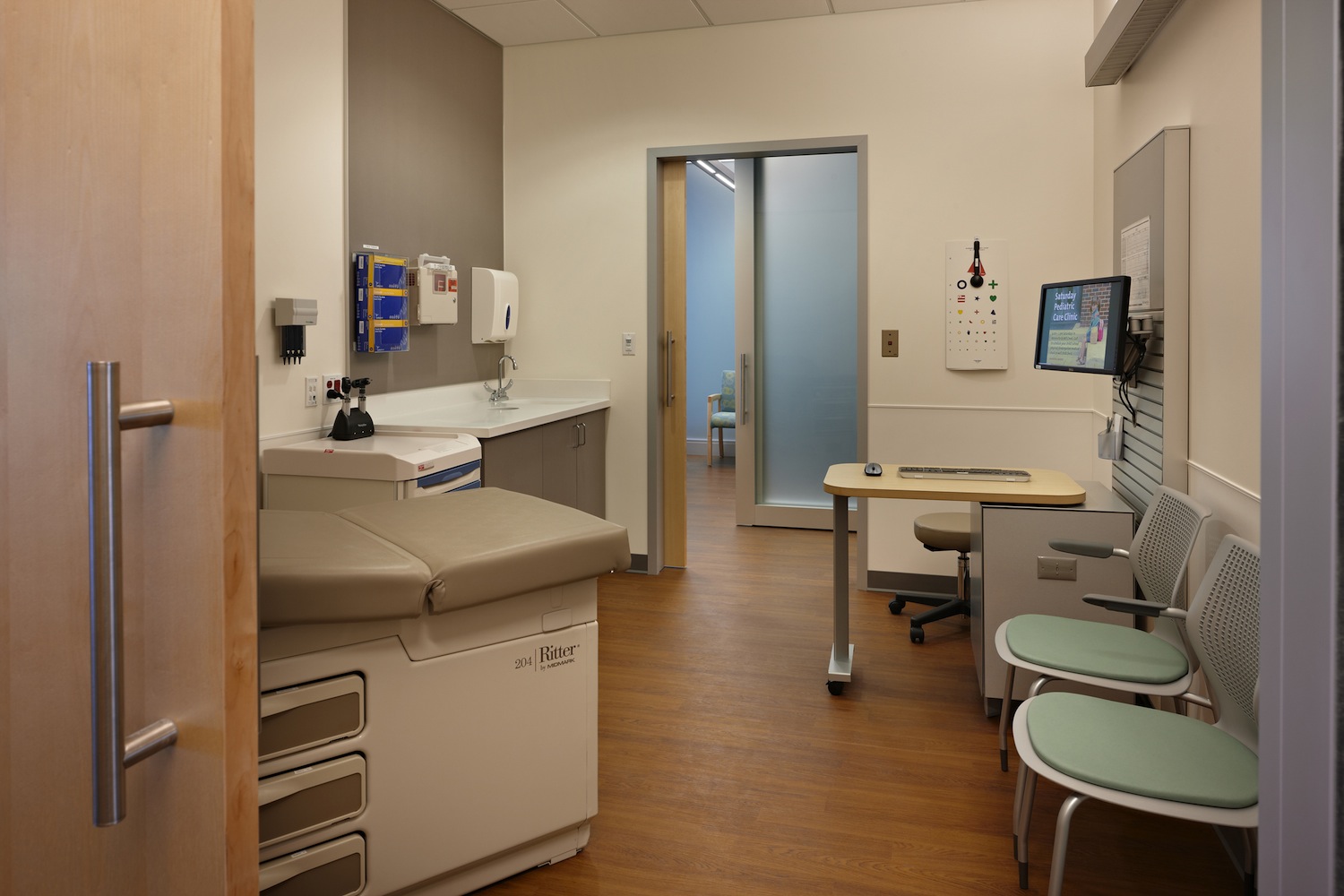
Photo: Doug Scott
Category B: Build, More than $25 million in construction cost
5. University of Minnesota Amplatz Children’s Hospital; Minneapolis, Minnesota
Tsoi/Kobus & Associates
The University of Minnesota Amplatz Children’s Hospital started with a vision: to create the ideal environment in which to provide and receive children’s healthcare. Today, the hospital is setting new standards for safety, comfort, and clinical efficiency. The six-story building consolidates the pediatric programs and inpatient units. It includes 96 same-handed, private inpatient rooms, a sedation/observation unit, dialysis unit, pediatric emergency department, an expansion of the existing imaging department and surgical suite, family resource center, gift shop, and underground parking. The building creates a distinctive identity for the hospital, immediately engaging visitors with its bright and playful exterior of multi-colored stainless steel panels. An interactive interior design theme, “Passport to Discovery,” enlivens the interior, aids in wayfinding, and offers opportunities for diversion and discovery. Photos: Nick Merrick, Hedrich Blessing; Drawings: TK&A
6. Palomar Medical Center; Escondido, California
CO Architects
Nationally recognized for its innovative approach to sustainable design, healing environments and technical execution, Palomar Medical Center is the first phase of development of a new 35-acre campus that includes the 360-bed acute-care hospital and a new central plant. Innovations in medical planning and architectural design meet the project goals of improving access to care, improving operational efficiencies, and creating sustainable, high-performance healing environments. Design strategies incorporate garden spaces at every level of the 11-story nursing tower, and utilize green-roof technology that extends the landscape and improves views from the patient rooms. The design includes a full complement of water conservation, air quality, and energy-saving measures. Photos: Tom Bonner
CONTINUE ARTICLE (READ ABOUT PROJECTS #7-12)
Related Stories
Steel Buildings | Apr 6, 2023
2023 AISC Forge Prize winner envisions the gas station of the future
Forge Prize winner LVL (Level) Studio envisions a place where motorists can relax, work, play, shop, or perhaps even get healthcare while their vehicles charge.
Architects | Apr 6, 2023
New tool from Perkins&Will will make public health data more accessible to designers and architects
Called PRECEDE, the dashboard is an open-source tool developed by Perkins&Will that draws on federal data to identify and assess community health priorities within the U.S. by location. The firm was recently awarded a $30,000 ASID Foundation Grant to enhance the tool.
Architects | Apr 6, 2023
Design for belonging: An introduction to inclusive design
The foundation of modern, formalized inclusive design can be traced back to the Americans with Disabilities Act (ADA) in 1990. The movement has developed beyond the simple rules outlined by ADA regulations resulting in features like mothers’ rooms, prayer rooms, and inclusive restrooms.
Market Data | Apr 6, 2023
JLL’s 2023 Construction Outlook foresees growth tempered by cost increases
The easing of supply chain snags for some product categories, and the dispensing with global COVID measures, have returned the North American construction sector to a sense of normal. However, that return is proving to be complicated, with the construction industry remaining exceptionally busy at a time when labor and materials cost inflation continues to put pricing pressure on projects, leading to caution in anticipation of a possible downturn. That’s the prognosis of JLL’s just-released 2023 U.S. and Canada Construction Outlook.
Cladding and Facade Systems | Apr 5, 2023
Façade innovation: University of Stuttgart tests a ‘saturated building skin’ for lessening heat islands
HydroSKIN is a façade made with textiles that stores rainwater and uses it later to cool hot building exteriors. The façade innovation consists of an external, multilayered 3D textile that acts as a water collector and evaporator.
Market Data | Apr 4, 2023
Nonresidential construction spending up 0.4% in February 2023
National nonresidential construction spending increased 0.4% in February, according to an Associated Builders and Contractors analysis of data published by the U.S. Census Bureau. On a seasonally adjusted annualized basis, nonresidential spending totaled $982.2 billion for the month, up 16.8% from the previous year.
Sustainability | Apr 4, 2023
ASHRAE releases Building Performance Standards Guide
Building Performance Standards (BPS): A Technical Resource Guide was created to provide a technical basis for policymakers, building owners, practitioners and other stakeholders interested in developing and implementing a BPS policy. The publication is the first in a series of seven guidebooks by ASHRAE on building decarbonization.
Sustainability | Apr 4, 2023
NIBS report: Decarbonizing the U.S. building sector will require massive, coordinated effort
Decarbonizing the building sector will require a massive, strategic, and coordinated effort by the public and private sectors, according to a report by the National Institute of Building Sciences (NIBS).
Education Facilities | Apr 3, 2023
Oklahoma’s Francis Tuttle Technology Center opens academic center for affordable education and training
Oklahoma’s Francis Tuttle Technology Center, which provides career-specific training to adults and high school students, has completed its Francis Tuttle Danforth Campus—a two-story, 155,000-sf academic building. The project aims to fill the growing community’s rising demand for affordable education and training.
Sports and Recreational Facilities | Mar 30, 2023
New University of St. Thomas sports arena will support school's move to Division I athletics
The University of St. Thomas in Saint Paul, Minn., last year became the first Division III institution in the modern NCAA to transition directly to Division I. Plans for a new multipurpose sports arena on campus will support that move.


